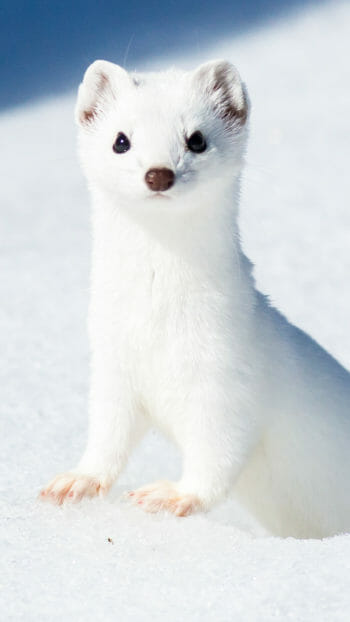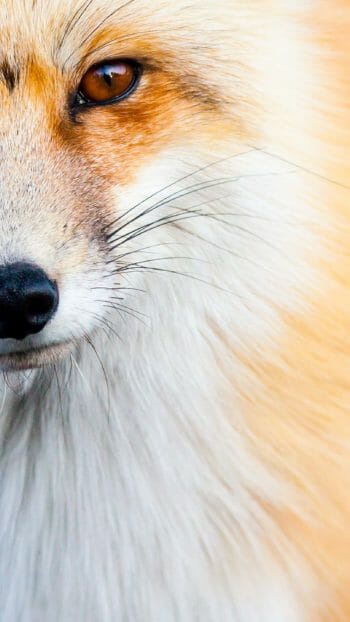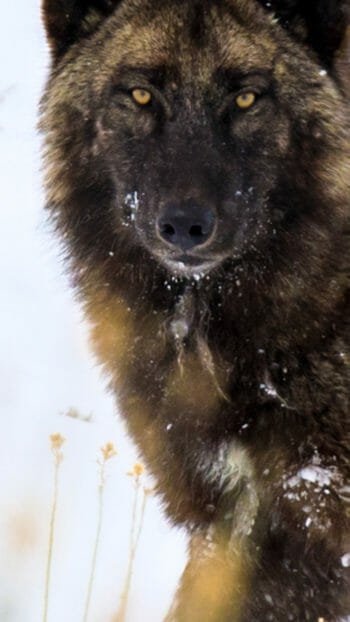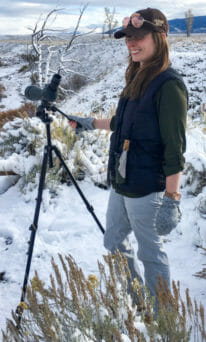Winter in Yellowstone conjures images of thick, white blankets of snow, frozen waterfalls, and frost covered bison with warm breath billowing from their nostrils in the frigid temperatures. Bison are one of Yellowstone’s most iconic species and they are true survivors through every month of the year, especially during the frigid months of winter. They do not hibernate until spring or travel vast distances, they simply hold tight and endure.
Visitors who join Jackson Hole Wildlife Safaris during the winter months often witness these majestic animals braving temperatures well below zero, steam rising from their breath as they move silently through the snow. Their presence across the frozen landscape is nothing short of iconic, a living link to the untamed American frontier.
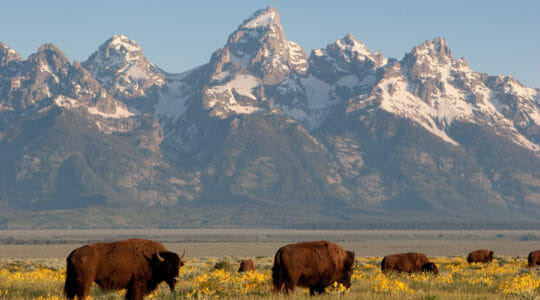
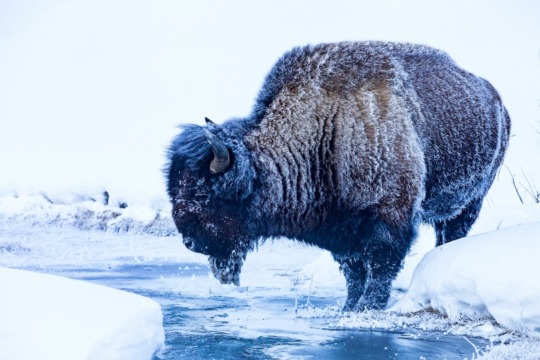
Built for the Cold
Bison are designed for winter survival. Their dense, woolly coats can grow up to two inches thick, creating an insulating barrier so effective that snow often rests on their backs without melting. Beneath that outer layer is a soft undercoat that traps warm air close to the skin, keeping body heat in and the cold out. Their skin itself adapts to the cold, accumulating a layer of fatty deposits to physically thicken for further insulation.
Natural oils in their fur help repel moisture, an essential aid during blizzards and sleet. But perhaps their most remarkable adaptation is their massive head and neck. These powerful tools act as natural snow plows, allowing bison to sweep aside deep drifts in search of grasses buried under four feet of snow.
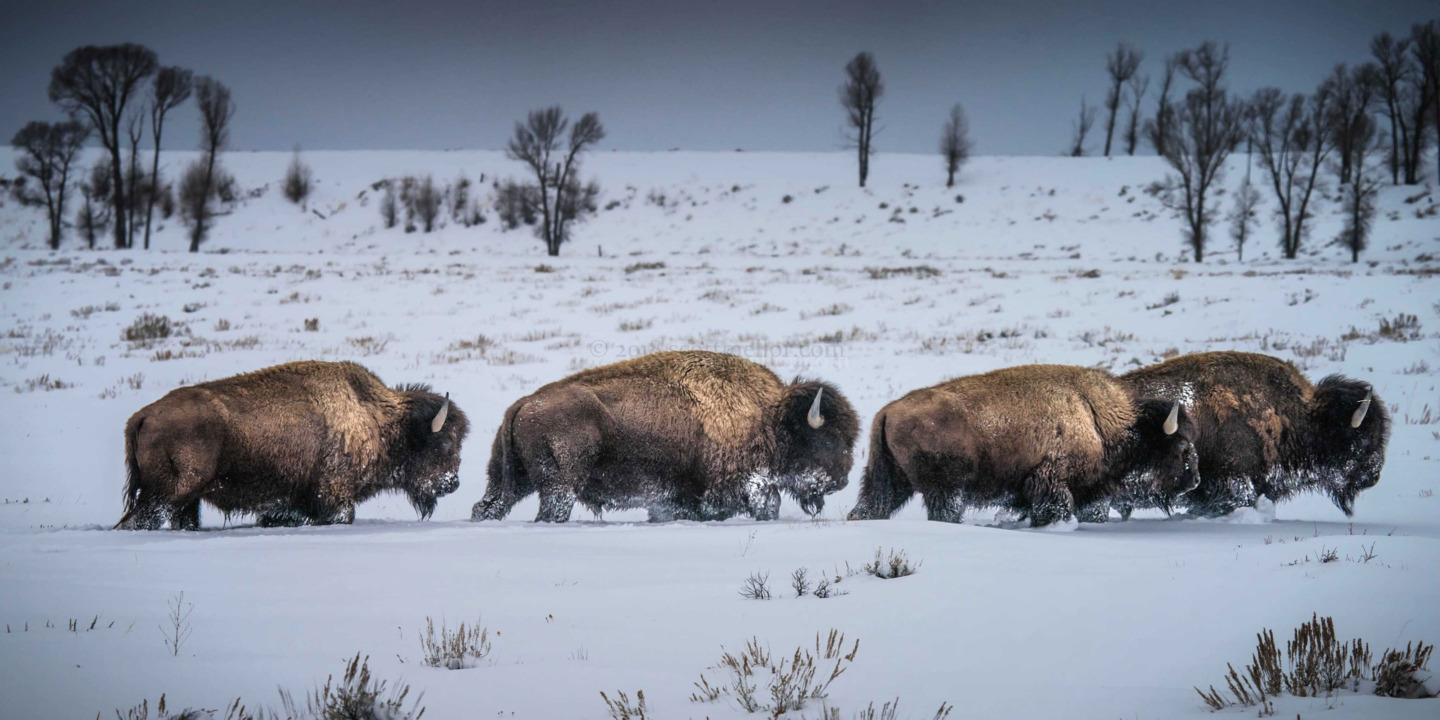
Conserving Energy Through the Cold
Winter brings deep snow, limited food, and freezing winds. To survive, bison rely on their ability to conserve energy. Their metabolic rate slows, and their activity decreases to preserve calories.
Herds often follow one another’s paths through snow, reducing the energy needed to move and access food. During intense storms, they may stand motionless for hours, stoically enduring the cold rather than wasting strength. This energy conservation is crucial to survival until spring’s green grass returns.
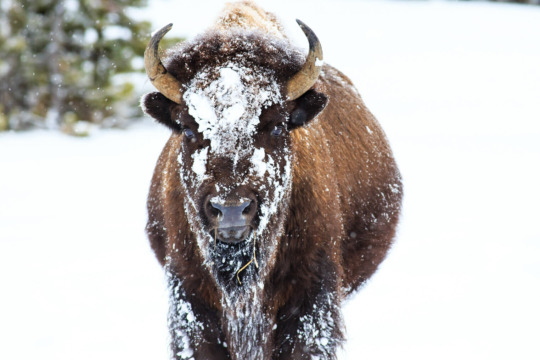

Splitting Up into Small Groups
Bison are social animals that depend on their herd for protection, but food supplies are very lean in the winter. Large herds that could number in the thousands in the summer decrease over the fall and into winter as they split up and move around, averaging to about 20 individuals per herd through the season. While other species like mule deer will migrate over 150 miles to winter habitats, bison will travel only up to 70 miles to lower elevations with less snow accumulation. These smaller herds disperse and spread out due to limited grazing availability. They can be found around hydrothermal areas as the underground heat helps to limit the snow.
These small herds still protect each other from predators. When threatened, bison display coordinated defense behaviors, often forming protective circles with adults facing outward and calves sheltered in the middle, an impressive display of strength and cooperation.
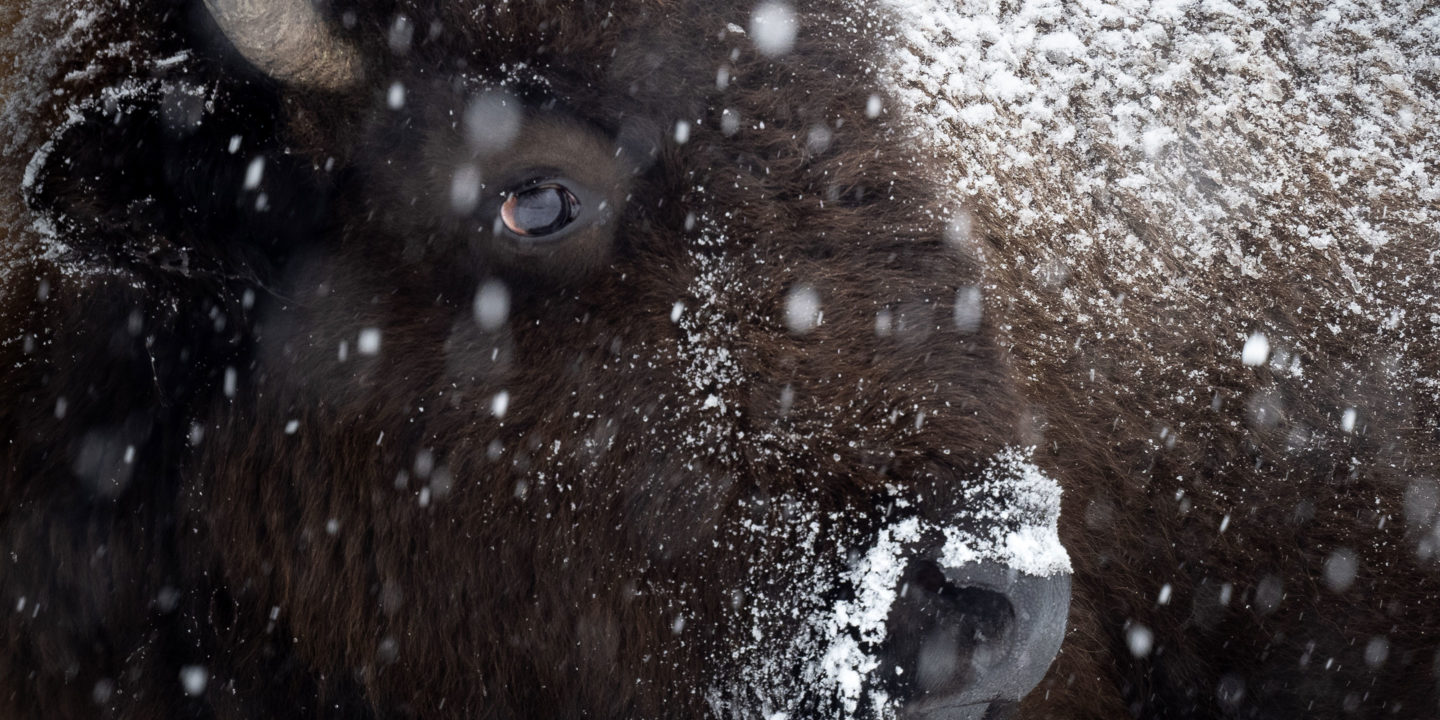
The Cycle of Resilience
By late winter, bison are leaner. As snow begins to melt and green shoots emerge, they enjoy the new vegetation and slowly follow it back to their summer range.
Spring brings new life to the herd. Calving season, which peaks in May and June, transforms the landscape with the arrival of orange-furred calves known as “red dogs.” Within hours of birth, these resilient youngsters can stand, nurse, and even run, keeping pace with their mothers on the open plains.
These newborns symbolize renewal, proof that even after the longest, coldest winter, life continues in the wild heart of Jackson Hole and Yellowstone.
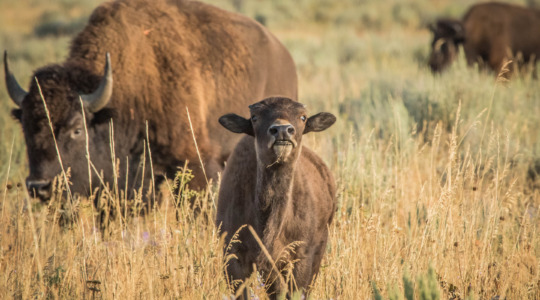
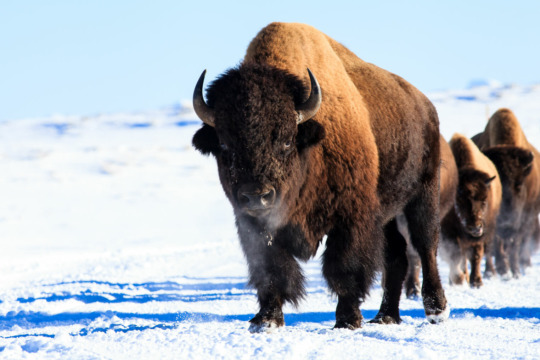
The Spirit of the American West
There’s nothing quite like seeing a herd of bison in the snow, their heavy coats dusted in frost, their slow movements echoing the rhythm of winter itself. For travelers exploring Yellowstone and Grand Teton National Parks, this is one of nature’s most unforgettable experiences.
While other species shelter and slumber through the cold, bison endure every storm. They are the true winter warriors of the West, a testament to strength, adaptation, and survival.

FAQs
How do bison survive the harsh winters in Yellowstone and Grand Teton National Parks?
Bison are incredibly well-adapted to cold weather. Their thick, double-layered coats provide insulation so effective that snow can sit on their backs without melting. They use their massive heads to sweep snow aside and reach dried grasses beneath. In addition, their metabolism slows in winter, allowing them to conserve energy when food is scarce.
Where can I see bison during the winter in Jackson Hole?
In winter, bison are often found in the Jackson Hole Valley, Grand Teton National Park, and throughout Yellowstone National Park, particularly in open meadows and geothermal areas where snow melts more quickly. Joining a guided Winter Wildlife Safari with Jackson Hole Wildlife Safaris offers the best chance to safely and responsibly view bison in their natural habitat.
What do bison eat during the winter months?
During winter, bison feed primarily on dried grasses buried under snow. They use their strong heads and necks to push aside snow and access vegetation below. Although food is less abundant, their efficient digestive systems and energy conservation strategies allow them to survive until spring when new growth appears.
Are bison dangerous to humans?
Yes! Despite their calm appearance, bison are wild animals capable of moving quickly and defending themselves if approached too closely. They can run up to 35 miles per hour and may charge when they feel threatened. Always keep a minimum distance of 25 yards (23 meters), and never attempt to feed or approach them. Viewing from a vehicle or with a professional wildlife guide ensures both your safety and theirs.
What’s the best time of year to photograph bison in Jackson Hole?
Bison can be seen year-round, but winter offers particularly striking photo opportunities. Their dark coats contrast beautifully against the snow, and steam often rises from their warm bodies in the cold air. Early morning and late afternoon light provides the best conditions for photography. For the most rewarding and safe experience, consider a guided photo safari led by Jackson Hole Wildlife Safaris’ expert naturalist guides.


